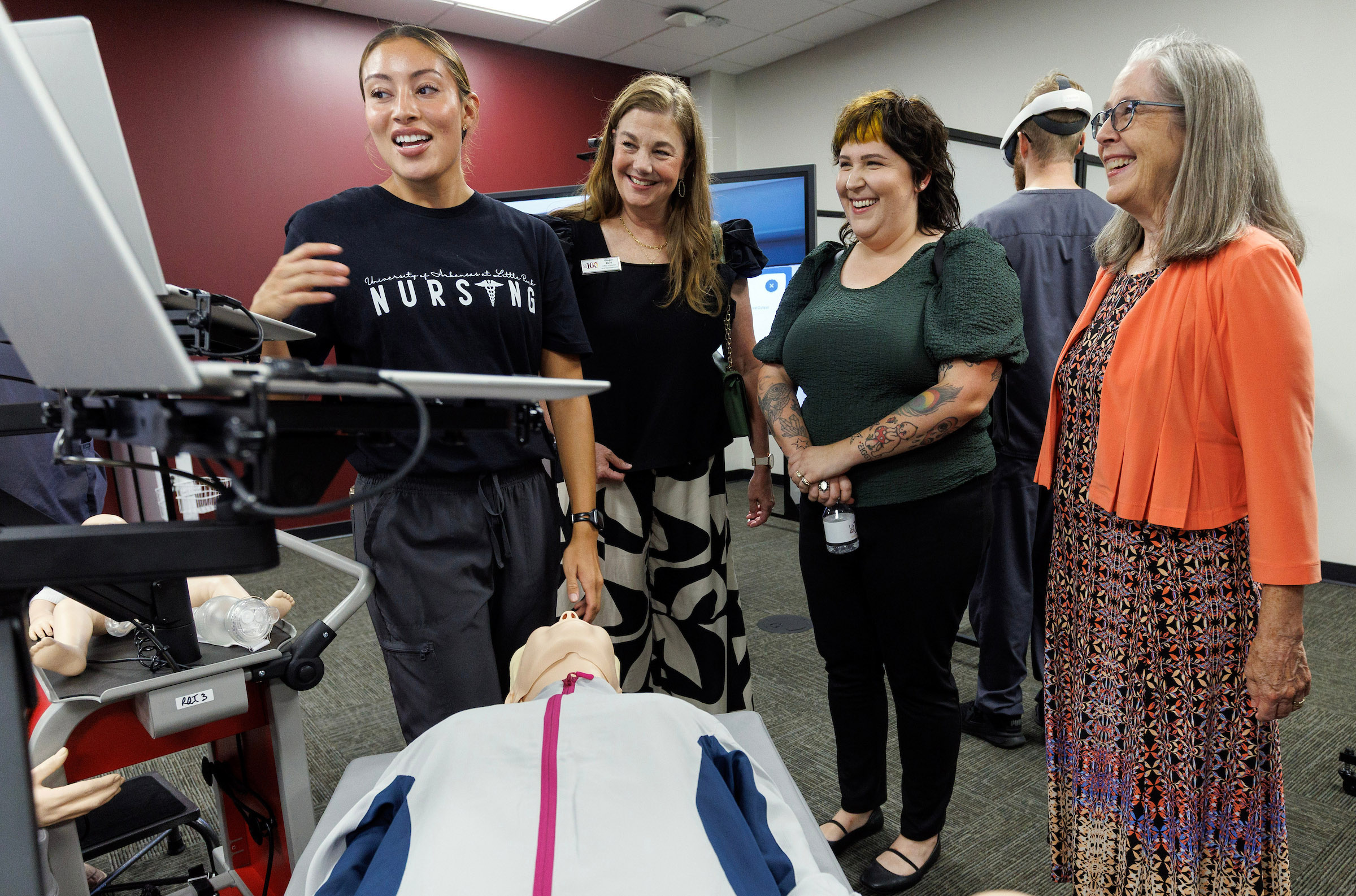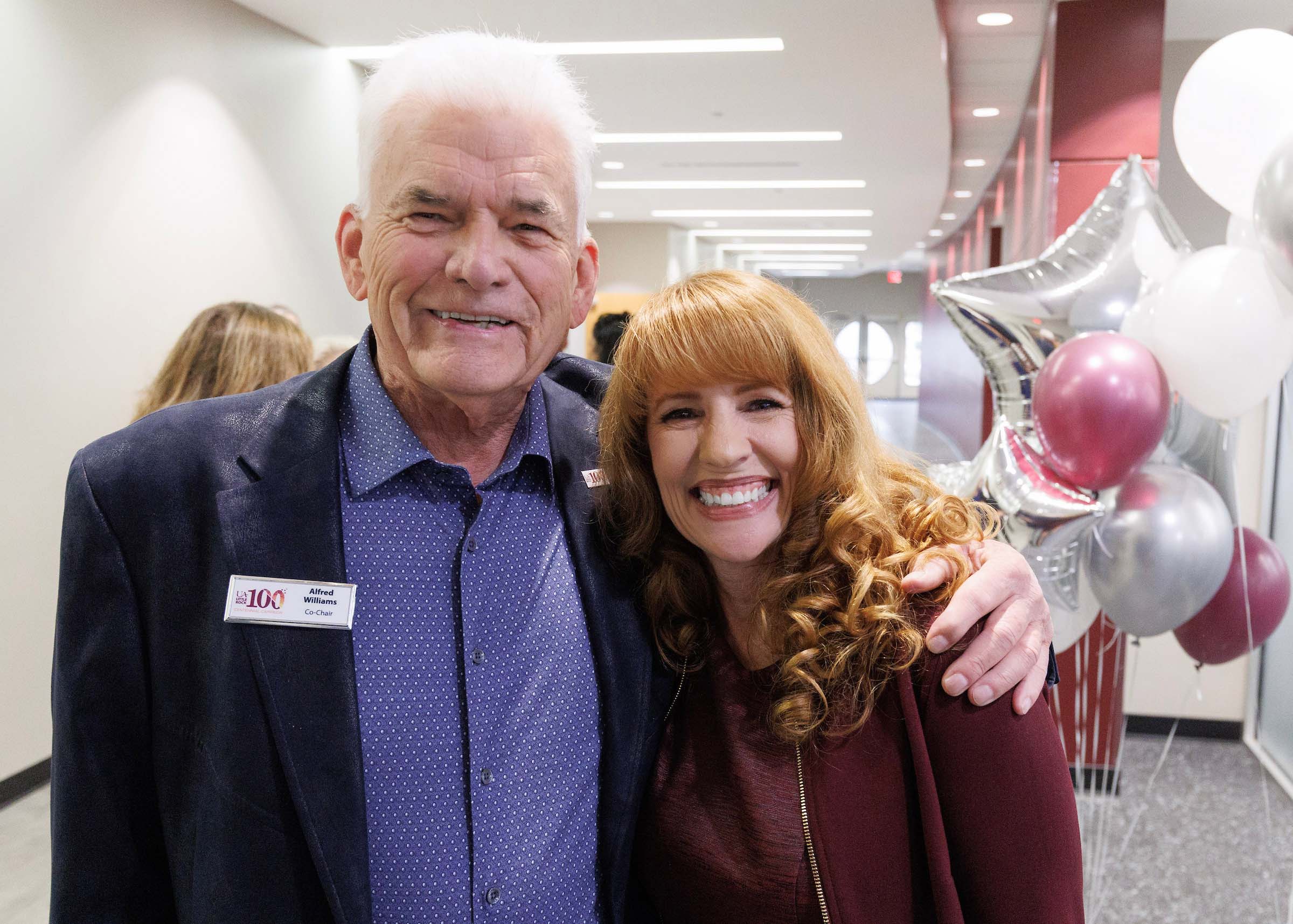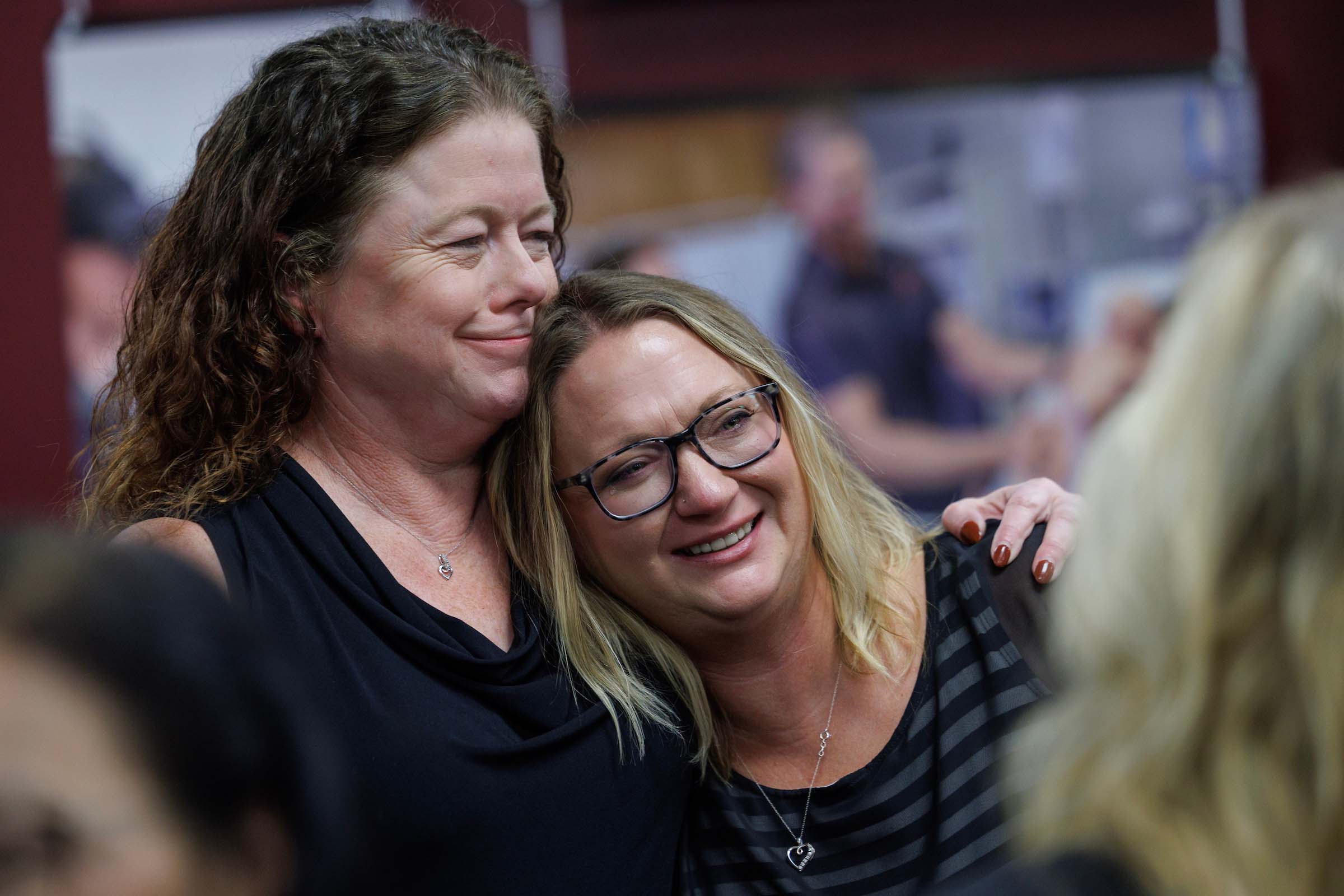UA Little Rock opens virtual reality lab for nursing students
November 17-23, 2025
By Angelita Faller
When nursing student Brendon Johnson slipped on a virtual reality headset inside UA Little Rock’s new Innovation Station, the classroom around him seemed to disappear.
Suddenly, he was in an emergency room, speaking with a dehydrated patient experiencing abdominal pain. The patient responded to his questions through artificial intelligence. Johnson checked vitals, monitored symptoms, and prepared for the next stage of care, all without leaving the lab.
“The VR equipment is cool,” said Johnson, a junior nursing major from Cabot. “We’re able to pick a scenario and work through it step by step, just like we would in a real hospital. One of my patients was dehydrated and admitted to the ER. I was able to talk to them, check vitals, and follow up on their condition. It’s a way to practice things we might never see during our clinical hours.”
For Johnson, the opportunity to simulate complex, rare, or even dangerous medical situations — such as a birth where a baby’s shoulder becomes stuck — is an invaluable addition to his education.
“It gives us a way to see things that would be dangerous if they happened to real patients,” Johnson said. “Some of these emergency situations are very rare, and this lets us practice them in a safe environment.”
Johnson’s demonstration was one of several that took place Sept. 30 as the University of Arkansas at Little Rock dedicated the Innovation Station, the first virtual reality lab in the state dedicated specifically for nursing students. The Innovation Station, located inside the Pat Walker Center for Nursing, is part of the School of Nursing’s ongoing effort to transform how future nurses learn, practice, and prepare for real-world patient care.
The dedication event brought together campus leaders, faculty, students, alumni, healthcare professionals, and community partners to celebrate the milestone. Guests toured the new lab and the Center for Simulation Innovation, an internationally recognized simulation center accredited among the best in the world. Visitors also witnessed CPR demonstrations on advanced new training carts that measure compression depth and speed, helping students refine their skills as they earn certification.
“A major step forward”
UA Little Rock Chancellor Christina S. Drale opened the ceremony by highlighting how the Innovation Station represents a leap forward for nursing education in Arkansas.
“Today’s nurses must be more than compassionate caregivers,” Drale said. “They must be clinically sharp, technologically proficient, and ready to adapt in fast-paced healthcare environments. The Innovation Station revolutionizes how our students learn, practice, and prepare for real-world care. This is just one of the ways UA Little Rock is strengthening the future of healthcare in Arkansas.”
The new lab allows students to use augmented and virtual reality equipment both in class and beyond, providing more opportunities to practice at their own pace and revisit complex scenarios. It also enables them to care for multiple patients simultaneously, something that is rarely possible in traditional clinical rotations.
UA Little Rock Provost Ann Bain, a registered nurse and former chair of the School of Nursing, emphasized that the Innovation Station builds on years of investment and innovation in simulation-based education.
“Simulation-based education is one of the most effective ways we can prepare students for patient care,” Bain said. “Over the past four years, our students have completed more than 114,000 hours of simulation training, supported by $1.26 million in new technology and equipment. The Innovation Station is the next step forward, giving students access to realistic, repeatable clinical scenarios that sharpen judgment and build confidence.”
Beyond “luck of the draw”
Traditional clinical experiences in nursing often depend on chance and whether students happen to encounter a particular medical scenario during their rotation. With the Innovation Station, UA Little Rock can create those moments on demand.
“In the past, clinical experiences were often the luck of the draw,” said Joanna Hall, director of simulation and a three-time graduate of the UA Little Rock nursing program. “With simulation, we no longer have to rely on chance. Students can experience a live birth, a cardiac arrest, or any number of emergency healthcare scenarios whenever they need to. Simulation allows them to make mistakes in a safe environment, learn from them, and build the kind of clinical judgment that saves lives.”
Hall added that the new VR lab expands those opportunities even further, giving students hands-on access to advanced tools and more flexibility to learn beyond scheduled sessions.
Keya McGee, president of the Student Nurses Association, described how simulation training has boosted her confidence and readiness for real-world care.
“This isn’t just about cool headsets. It’s about the future of healthcare,” McGee said. “Simulation gives us the confidence to make decisions under pressure, to reflect on our choices, and to apply what we learn to real patients. This lab elevates not only the UA Little Rock School of Nursing, but also healthcare for the millions of Arkansans we will serve.”
Alumni perspective: Ready from day one
For Jussus Sanchez, a 2014 graduate of UA Little Rock’s nursing program and a certified registered nurse anesthetist at UAMS, the Innovation Station represents how far nursing education has come and how it continues to evolve over time.
“When I was a student, we had animatronic manikins that could give feedback, and that was cutting edge at the time,” Sanchez said. “Now, with augmented reality, it feels like you are there in person. With this headset, you’re more one-on-one with your clinicals, and it results in a more focused approach.”
Sanchez said he wishes he had access to this technology as a student because of how much it enhances skill development.
“It will help nurses build confidence in their abilities, give them a good idea of how to do a head-to-toe assessment, and learn how to approach a patient in ways a manikin alone can’t represent,” he said.
He also praised UA Little Rock’s program for producing graduates who are prepared to meet the challenges of today’s healthcare landscape.
“Nurses leave this program clinically skilled but also compassionate, adaptable, and ready to thrive in fast-paced environments,” Sanchez said. “The challenges in healthcare today are serious — staffing shortages, increasing patient needs, and more complex care than ever before. What we need are nurses who are sharp, steady under pressure, and prepared to deliver excellent care from day one. Thanks to UA Little Rock’s simulation-based training, that’s exactly what we see in their graduates.”
Strengthening Arkansas healthcare
The Innovation Station and the Center for Simulation Innovation reflect UA Little Rock’s broader commitment to addressing Arkansas’s healthcare workforce needs. As the state continues to face a shortage of qualified nurses, the university is investing in technology and training designed to better prepare students for the realities of modern healthcare.
“The dedication of the Innovation Station is an investment in the health of Arkansas,” Bain said. “It ensures our students are ready to deliver excellent care, whether in hospitals, clinics, or rural health centers. Most importantly, it’s a step forward in addressing the critical nursing shortage facing our state.”
For students like Johnson, that investment is already making a difference.
“It’s nice if you want extra practice or if you want to see something you haven’t seen before,” he said. “This gives us more chances to practice and be prepared for what we’ll see
as nurses.”
The dedication of the Innovation Station is more than an investment in technology; it’s an investment in the health of Arkansas.
“It ensures our students are ready to deliver excellent care, whether in hospitals, clinics, or rural health centers,” Bain said. “Most importantly, it’s a step forward in addressing the critical nursing shortage facing our state.”
Photo Caption:
1. UA Little Rock nursing students demonstrate advanced CPR techniques during a dedication event for the university’s new Innovation Station Lab in the School of Nursing.
2. Alfred Williams, left, co-chair of UA Little Rock’s Centennial Campaign, and Dr. Ginger Gummelt, right, dean of the UA Little Rock College of Business, Health, and Human Services, celebrate the launch of the Innovation Station Lab.
3. Dr. Sloan Davidson, left, director of the UA Little Rock School of Nursing, celebrates with fellow nursing faculty and students as they dedicate the Innovation Station Lab.
Photo Credit:
Photos by Benjamin Krain.





